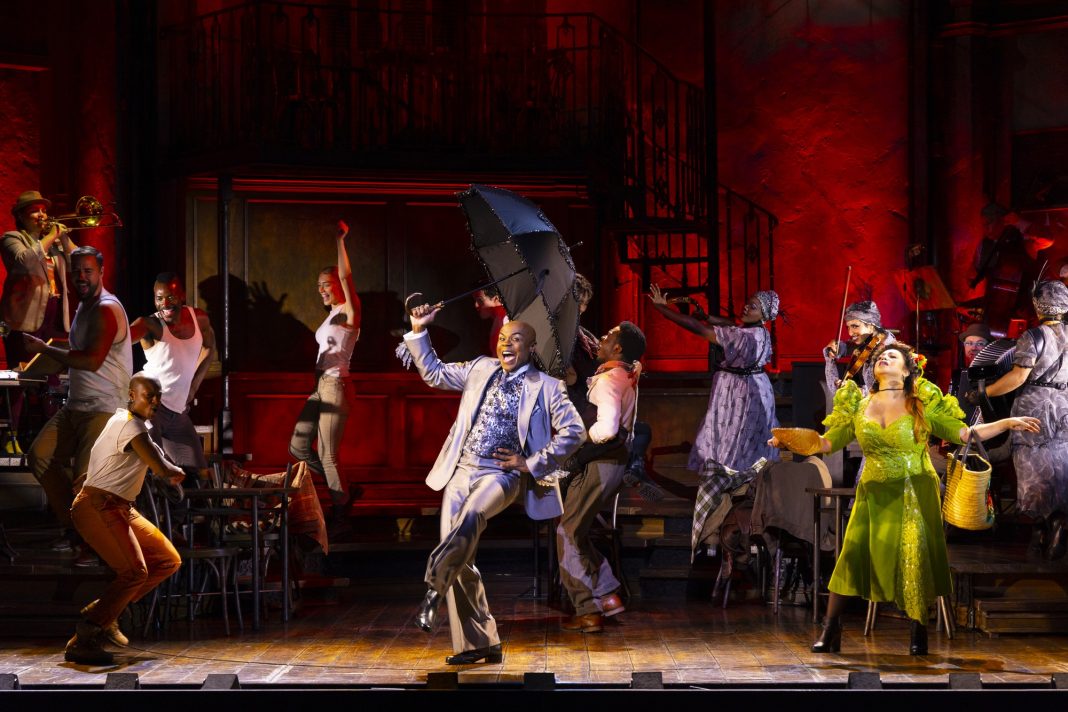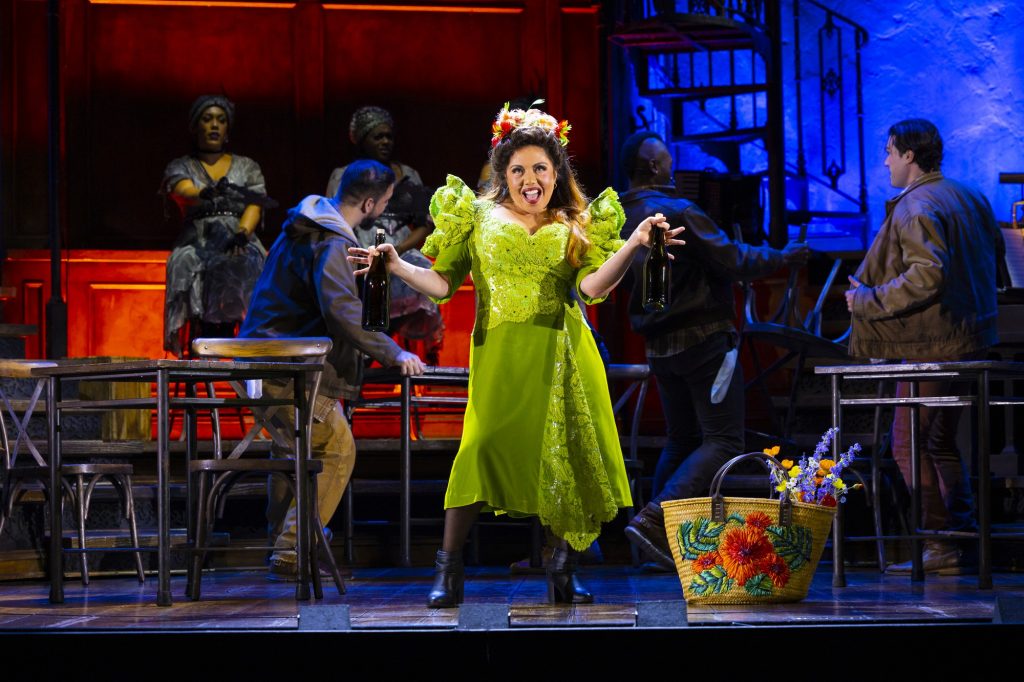
The U.S. touring production of “Hadestown” came to the Adrienne Arsht Center in Brickell from Dec. 6 to 11, selling out in its final run in Miami on the final Sunday showing. The tour’s initial run was slated in mid-2020 after the Broadway production swept 13 Tony Awards in 2019, including Best Musical. The tour was moved to this year to accommodate for pandemic-related shutdowns.
“Hadestown” first entered the public domain as a concept album by Anais Mitchell in 2010, after eight years of development. It was then picked up by the New York Theatre Workshop in 2016, releasing a live album of the small-scale production in 2017. After a West End run in 2019 with director Rachel Chavkin, “Hadestown” made its way to Broadway, retaining the 2017 castings of Amber Grey as Persephone and Patrick Page as Hades.
The show follows the ancient Greek myth of Orpheus and Eurydice. In the original telling, Orpheus and Eurydice are husband and wife and Eurydice gets bit by a snake and dies. Orpheus, a devoted husband and talented musician, journeys into the Underworld and pleads with Hades to return his wife to the living earth. Persephone favors his singing and music and convinces Hades to let them return.
He agrees, with a condition: Orpheus may walk back to the living world with Eurydice behind him, but if he turns to check if she is still there, Eurydice returns to the Underworld and Orpheus lives on without her.
This modern retelling is a little different. It is narrated by Hermes, who, in ancient Greek mythology, guided dead souls to the Underworld. He is supported by three Fates who act as negative forces against the human characters. The main set is Great Depression-inspired, featuring a band on stage playing different instruments to create an American folk style of music–particularly the trombone and accordion.

As the myth goes, Persephone spends six months above ground for spring and summer and six months under for fall and winter in Hadestown. But, the love between Persephone and Hades has faded and created extreme seasons — blazing hot summers and blizzard-torn winters. Due to this, the people on Earth are impoverished and go “down to Hadestown” because they are guaranteed work there.
Orpheus, a singer, is relentlessly optimistic about his talent, believing he may “fix” the seasons with a song. Eurydice is untrusting and pessimistic and upon seeing a storm that Orpheus refuses to prepare for is “bitten” as Hades lures her into Hadestown with the promise of work and shelter. It is here that she discovers the workers of Hadestown are dead people who forget themselves and Eurydice longs to remember Orpheus, while Persephone feuds with her husband over his industrialism and coldness towards her.
The story tells a powerful tale about poverty, work and relationships, with Orpheus’ falsetto vocals in “Wait for Me” contrasting Hades’ dark, almost inhuman bass in “Hey, Little Songbird” showing their perspectives — Orpheus’ blissful ignorance to the world around him, while Hades uses suave and persuasion to get what he wants.
Orpheus and Eurydice’s relationship is new and innocent, based on first impressions and naivete. Hades and Persephone, however, have already seen the worst parts of each other, gone through hardship to be together and have stopped trying to fix the gap between them. This rift creates extreme poverty and hardship for everyone on earth and Hades takes advantage of this by creating Hadestown and exploiting the people who come to work for him out of desperation.
Hades soon learns that this industrialism does not fix the issues in his marriage. Orpheus’ journey through Hadestown to retrieve Eurydice changes him and he goes from being sure of himself to extreme self-doubt and the breakdown of his character cost him his second chance to be with Eurydice.

As far as the quality of the performers, I had the wonderful opportunity to see “Hadestown” with the original 2019 cast, so that is the comparison being made. Aside from a few factors, the performances were near-identical. The touring Orpheus is wonderful, his vibrato and falsetto smooth and clear compared to the original Broadway performer. He portrays Orpheus’ innocence and willingness to please very genuinely, in a way that doesn’t feel forced.
Hades is also a character that requires comparison, as his vocal range wasn’t quite on par as Hades is written, due to his bass range being so low it’s uncommon. But, the choices he made and the chemistry between him and Persephone were definitely there — it was just missing the shock factor that Hades’ vocals are supposed to have.
Movement was used so intentionally throughout the show, with the Worker’s Chorus (Ensemble) supporting the main character’s motivations and feelings through dance. In “All I’ve Ever Known,” we see Orpheus and Eurydice perform an almost acrobatic dance, symbolizing their chaotic journey in learning how to love each other and gain trust in one another.
In “Doubt Comes In,” the stage is in complete darkness with only a spotlight. Orpheus ascends back to earth and Eurydice constantly moves around the stage to show his doubt and why he might think she had left him on the journey back home.
The show is beautifully done and tells from the beginning in “Way Down Hadestown” that the show will end tragically, but they will sing the story again, as valuable lessons lie within it. This sentiment echoes throughout the show and Hermes’ narration, meant to prepare the audience for its end, but it does not take anything away from the heartbreak at the end.
It is tragic, yet beautiful, and a show that will hopefully become a staple of its time, showing that retellings do not have to be so modern and commercialized for them to succeed. They can be the exact opposite and sell out theaters cross-country.





